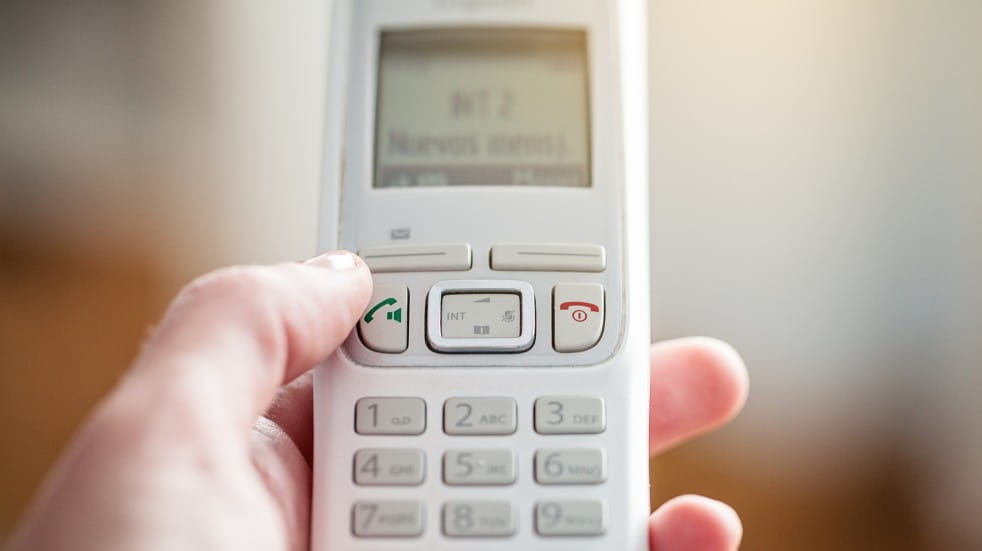
The way your landline phone service works is going to change – here’s what you need to know
Your expert: In the last 15 years, technology journalist Verity Burns has covered everything from robot vacuum cleaners to electric cars and loves cutting through jargon.
By the end of 2025, the UK’s telephone network is set to undergo one of the biggest upgrades it has ever seen. The goal? To ensure the service is fit for the future by taking it online. While you’ll still be able to have a landline in your home, there will be some changes behind the scenes that will affect how it all works, meaning some of your older devices might need replacing or updating.
Traditionally, many of the landline telephones in our homes have run on an ‘analogue’ network called PSTN, or public switched telephone network. This relies on physical components, such as copper wires, to carry voice signals between caller and recipient. While it’s evolved over the years, PSTN works on the same basic principles as the first public phone networks of the late 19th century. That means it’s time-consuming and costly to maintain, and with the rest of the telephone network across the world now almost entirely digital, or heading that way, our network is well overdue a makeover.
Moving online

The move will be to newer digital technology called VoIP, or voice over internet protocol, which uses the internet to make calls. This is tried and tested technology – if you’ve used Skype or Zoom to call friends or family, you may even have used it before.
The switch is being led by the phone and broadband companies but is being supported by the government and Ofcom to make sure everything goes smoothly. Moreover, it aligns with the government’s plans for at least 85% of the UK to have access to full fibre or gigabit-capable broadband by 2025.
For most people with a broadband connection already, the switch should be straightforward with minimal disruption. Your landline will continue to work as it always has, using the same telephone number and possibly even the same handset, but will plug into your router rather than a telephone socket.
If you have a very old phone, this may need upgrading, but your phone provider should be able to advise you on that when they call you to discuss the switch. Remember, until they call, there is nothing for you to do and everything remains the same.
Only 3% of UK households have a landline without home broadband, but if you’re one of them, there will be a couple of options. You can opt to get high-speed internet installed as part of the switchover, or if you don’t want or need the internet except for making phone calls, you’ll be given the option for a simpler ‘voice only’ connection. Ofcom is clear on this – you won’t be forced to pay for a super-fast broadband connection you don’t plan to use.
For voice-only customers, BT has committed to not raising prices above inflation for at least five years. That means you shouldn’t see any significant rise in your bill while the changeover takes place and for some time after.
The pros and cons
You should find that telephone lines are much clearer on VoIP and, although we’re yet to see any tariffs, if current services are anything to go by then calls should be cheaper too.
Another advantage is that any upgrades required by the system won’t cause the disruption that occurs with a physical network, meaning we can more easily stay one step ahead of any future features or technology.
The big downside to the move is that the system relies on your home’s electricity. While providers can put procedures in place that keep your system online if there’s a blip in your internet connection, you won’t be able to make a phone call from your landline in a complete power cut.
While this is likely to be a relatively rare occurrence for most households, it’s advised you have a mobile phone as a backup for those times. If you don’t have a mobile, suffer with poor signal in your area or depend on your landline due to a disability, your phone provider should offer you a battery-operated handset to keep your landline up and running.
Get ready

There will be plenty of support available, but here’s how to stay one step ahead…
While so far (at the time of writing) there’s been no roadmap or schedule announced for when this upgrade to VoIP will start to happen, it’s never too soon to get prepared.
It will be useful to have a think about the gadgets and services that you use with your current landline – these could include things such as telecare, alarm systems or fax machines – as they’re all likely to be affected by the upcoming switchover.
More modern devices will probably be equipped for the move online and you won’t need to change anything, but older devices might need upgrading or replacing. If you’re concerned, speak to your providers, who will be able to advise you best.
If you want to find out more, you’ll find plenty of information at futureofvoice.co.uk. Change can often be a bit unsettling, but the digital switchover isn’t happening overnight. It’s going to take place over a couple of years, so you have plenty of time to get to grips with all that’s new. Ofcom’s rules state you must be given sufficient notice and support to manage the change, so you can embrace the digital future without worry.
Do more with Boundless
To benefit from amazing offers, along with dozens of other deals on holidays, motoring services, experiences, shopping and more, join Boundless today. To find out how, visit our dedicated membership page.





